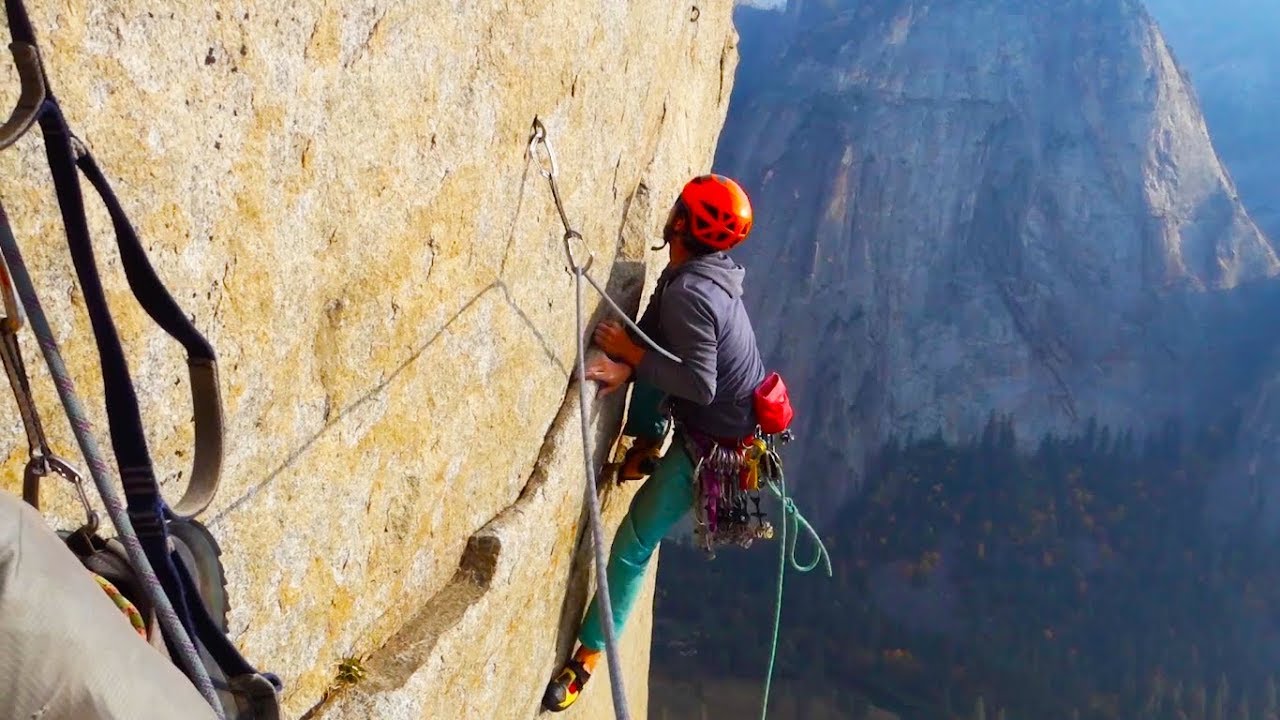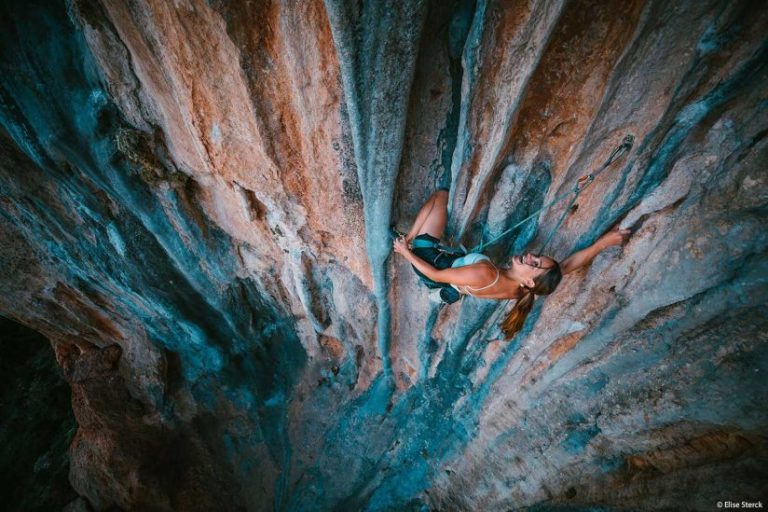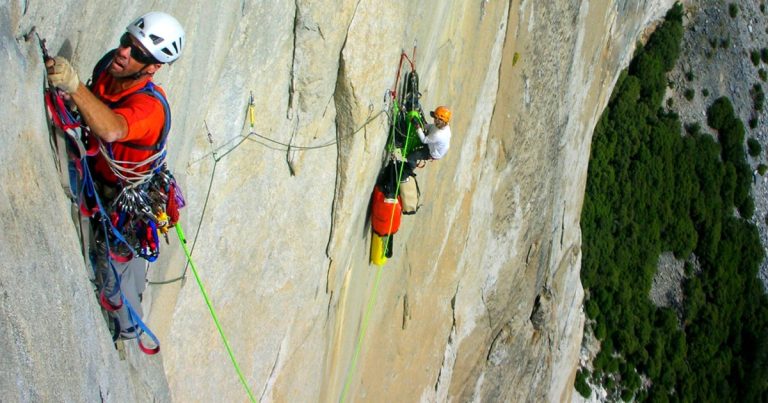Big Wall Climbing Yosemite
Introduction to Big Wall Climbing Big wall climbing is a specialized discipline within the world of rock climbing, where climbers tackle massive cliffs and rock formations that require multiple days to ascend. Yosemite National Park in California is widely regarded as the birthplace of big wall climbing, with its iconic granite walls attracting climbers from around the world. In this article, we’ll explore the exhilarating world of big wall climbing in Yosemite and provide you with valuable information to plan your own adventure.
Yosemite’s Iconic Big Wall Routes

El Capitan
The Nose One of the most famous big wall routes in the world, the Nose on El Capitan, is a must-do for any serious climber. This 3,000-foot vertical ascent follows the prominent arête that divides El Cap’s southeast and southwest faces. First climbed in 1958, the Nose has become a benchmark for big wall climbing, with its 31 pitches of diverse terrain and demanding technical challenges.
Freerider Freerider is another popular route on El Capitan, offering a slightly less difficult challenge than the Nose. This 35-pitch route climbs the southwest face of the monolith and features many memorable sections, including the iconic “Monster Offwidth” and the notorious “Boulder Problem.” Freerider is an excellent choice for climbers looking to push their limits on a slightly more moderate Yosemite big wall.
Half Dome
Regular Northwest Face Another legendary Yosemite big wall is Half Dome’s Regular Northwest Face. This 23-pitch route is the first grade VI climb in the United States, established in 1957. Climbers who tackle this formidable ascent will be rewarded with a mix of crack, slab, and chimney climbing, culminating in an unforgettable summit experience.
Tis-sa-ack For those seeking a more remote and challenging climb, Tis-sa-ack on Half Dome’s north face is an excellent choice. Named after a Native American legend, this 27-pitch route features demanding offwidth and chimney climbing, as well as a spectacular position high above Yosemite Valley.
Essential Big Wall Climbing Skills
Aid Climbing Techniques* Aid climbing is a crucial skill for big wall climbers, as it allows them to progress on sections that are too difficult or blank for free climbing. Climbers use specialized gear such as etriers (aiders) and ascenders to move up the wall, relying on the strength of their gear placements rather than their physical abilities. Mastering aid climbing techniques is essential for anyone looking to tackle Yosemite’s big walls.
Rope Management Efficient rope management is vital for success on big walls. Climbers need to be proficient in techniques like rope coiling, belaying, and swapping leads to keep the ascent smooth and reduce the risk of dangerous rope snags. Additionally, knowledge of advanced skills like simul-climbing and short-fixing can significantly speed up the climbing process.
Hauling Systems Hauling is a necessary part of big wall climbing, as climbers need to transport their food, water, and camping gear up the wall. Learning how to set up and manage a hauling system, including the use of haul bags and pulleys, is essential for a successful and enjoyable big wall experience.
Big Wall Climbing Gear
Basic Gear Big wall climbing requires a robust set of basic climbing gear, including a harness, helmet, climbing shoes, carabiners, slings, and an assortment of passive and active protection. Additionally, climbers will need a belay device, rappel device, and several lengths of static and dynamic ropes.
Specialized Gear Big wall climbing also necessitates specialized gear, such as aiders, ascenders, daisy chains, and haul bags. Depending on the route, climbers may also need additional items like portaledge systems, big bros, and cam hooks.
Preparing for Your Big Wall Climb
Physical Fitness Big wall climbing demands a high level of physical fitness, as climbers must endure long days of challenging climbing and heavy loads. Training for strength, endurance, and flexibility is crucial, as is maintaining a healthy diet and proper hydration.
Mental Preparation Mental preparation is equally important for big wall climbers, as they will face fear, fatigue, and self-doubt during their ascent. Developing a strong mental game through visualization, goal-setting, and positive self-talk is essential for success on big walls.
Route Planning and Research Thorough route planning and research are vital for a safe and enjoyable big wall experience. Climbers should study guidebooks, online resources, and seek advice from experienced climbers to familiarize themselves with their chosen route and its specific challenges.
Safety Considerations Safety is paramount in big wall climbing. Climbers must be diligent in their gear placements, anchor building, and communication with their partners. Additionally, monitoring weather conditions, practicing proper waste management, and adhering to Leave No Trace principles are all critical aspects of a safe and responsible big wall adventure.
The Yosemite Climbing Community Yosemite’s big wall climbing community is diverse and welcoming, with climbers of all skill levels and backgrounds. Connecting with fellow climbers, both online and in-person, can provide valuable support, advice, and camaraderie during your big wall journey.
Conclusion Big wall climbing in Yosemite offers a thrilling and unforgettable experience for climbers seeking the ultimate challenge. With proper preparation, training, and respect for the park’s natural beauty, you can embark on a life-changing adventure among the granite giants of this iconic climbing destination.
FAQs
- What is the best time of year for big wall climbing in Yosemite? The prime season for big wall climbing in Yosemite is typically from May to October, with June and September being the most favorable months due to cooler temperatures and fewer crowds.
- Do I need a permit to climb a big wall in Yosemite? While climbing itself does not require a permit, overnight stays on big walls do. You’ll need to obtain a wilderness permit from the park for any overnight big wall climbs.
- How long does it take to climb a big wall in Yosemite? The time required to climb a big wall in Yosemite can vary greatly depending on factors such as the climbers’ skill level, the route’s difficulty, and the weather conditions. Most big wall routes take between 2 and 5 days to complete, although elite climbers may finish certain routes in a single day.
- What should I do if I encounter a problem while climbing a big wall in Yosemite? In case of an emergency or an unexpected issue, try to remain calm and assess the situation carefully. Communication with your climbing partner is crucial, and having a plan for self-rescue is essential. If the situation is beyond your abilities, call for help using a satellite phone or signaling device, and wait for park rangers or a rescue team to arrive.
- What can I do to minimize my impact on Yosemite’s big walls and the surrounding environment? Practicing Leave No Trace principles is vital when climbing in Yosemite. This includes packing out all trash, using designated bathroom facilities or human waste disposal bags, avoiding damage to vegetation, and respecting wildlife. Additionally, be mindful of your noise levels and considerate of other climbers who may be sharing the route with you.


